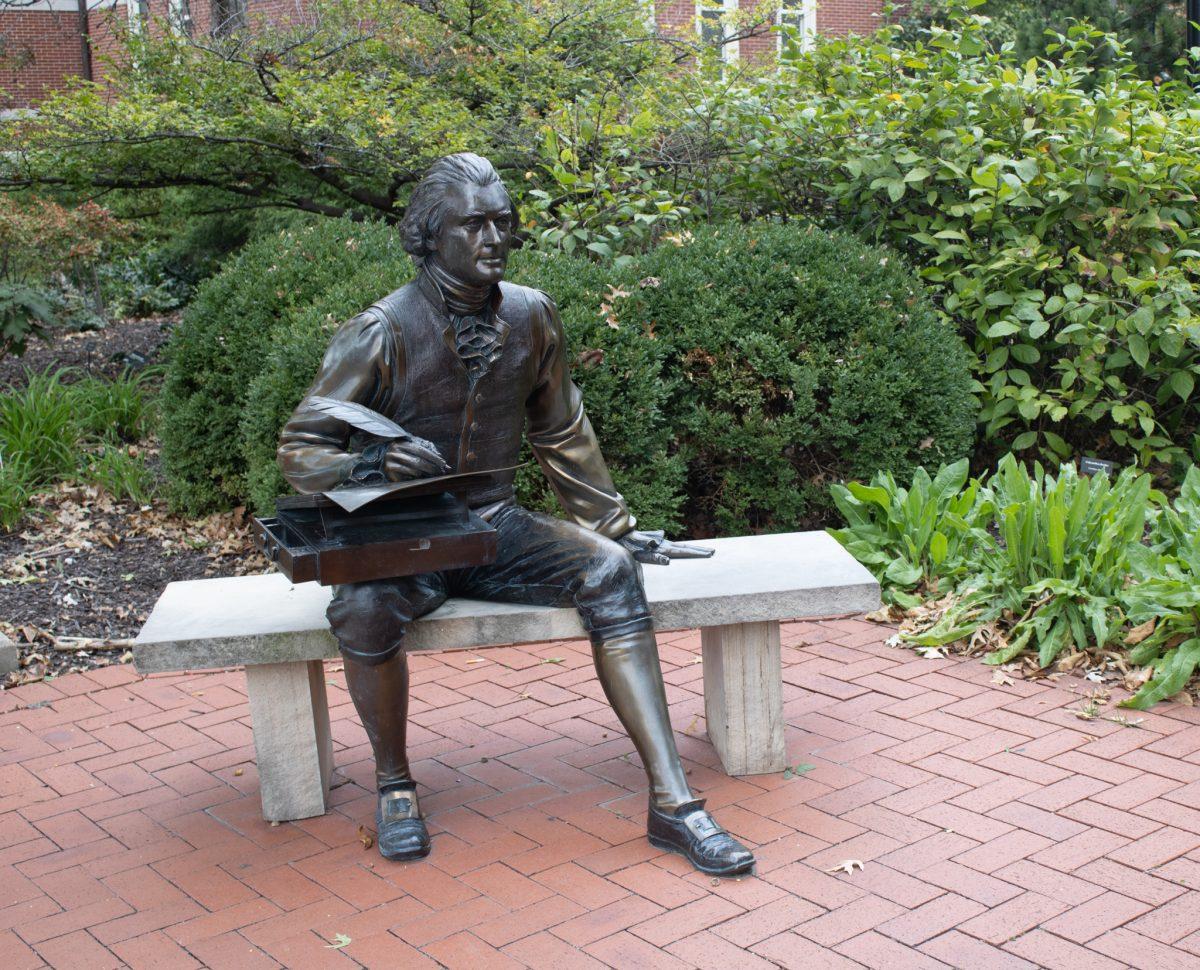Grace Miller is a freshman journalism major at MU. She is an opinion columnist who writes about culture and politics for The Maneater.
CONTENT WARNING: This content discusses sexual violence.
With the privilege I hold, it is easy to view the world through rose-colored glasses, blind to prejudice against people who have different experiences than me. This is why I never opened my eyes to memorials like the Thomas Jefferson statue in the Francis Quadrangle until a late-night class discussion.
Junior Roman Leapheart started a petition in 2020 to remove the statue, which garnered more than 3,500 signatures. Regardless, the university decided to maintain its stance. Mun Choi, UM System president and MU chancellor released a statement shortly after.
“We learn from history,” Choi said [according to an article from The Missourian]. We contextualize historical figures with complex legacies. We don’t remove history.”
By refusing to remove or contextualize this statue, MU is perpetuating a culture of silence around racism and sexual violence.
In fact, there is not any mention of Jefferson’s sexual assault of women like Sally Hemings. Enslaved at birth, she tolerated life as his concubine in exchange for certain personal privileges and her children’s eventual freedom. She died with six children, all fathered by the man who owned her. A simple plaque etched with a holistic view of his life would do nothing but contextualize this complex legacy for those who might be unaware of his abhorrent actions.
This statue is not a historical artifact. It was constructed well after the events depicted, meaning the artist George Lundeen was in no way tied to Jefferson’s history. In fact, MU’s Thomas Jefferson placed in 2001 is one in a series of 36 identical copies. Why, one might ask, would a figure so prominent in U.S. history need to be replicated this much for us to understand that he was pivotal to our country’s success? The answer is that he does not need to be replicated and certainly has no place on a college campus.
However, Columbia has shown it can make valuable progress. Oct. 7, the city voted to remove another prominent racist memorial: the murals on Boone County Courthouse. Painted by Sid Larson in 1994, they depict people of color being slaughtered at the hands of white settlers. Considering this is public property, it is understandable that these images sparked public outrage. Like Jefferson’s cast, this mural was not a historical artifact and should never have been treated as such.
Anyone can understand that Jefferson acted in the context of his time, but his time is also long gone. Today, students should be able to walk to classes without being reminded of a past where enslaved people were exploited without any opportunity for education, let alone at a collegiate level. After years of having their opinions disregarded, it is time to take a stand and remove reminders of a segregated society.
In light of MU’s recent sexual assault epidemic, Leapheart connected Hemings to the way victims are treated today.
“Unless we actively support our endangered communities, we are cementing our legacy as an institution built off rape culture that starts with Sally Hemings and ends with young people who come here their freshman year to get an education,” Leapheart said.
While this Jefferson statue is not the only reminder of discrimination in Columbia, its removal or — at the very least, contextualization — would be a move in the right direction for students troubled by its history.
If you or someone you know would like to donate for the prevention of further sexual violence, please visit RAINN.
Edited by Cayli Yanagida | [email protected]














